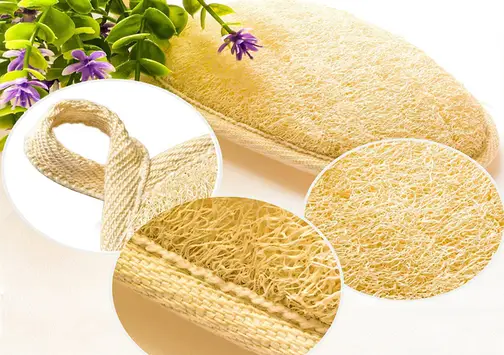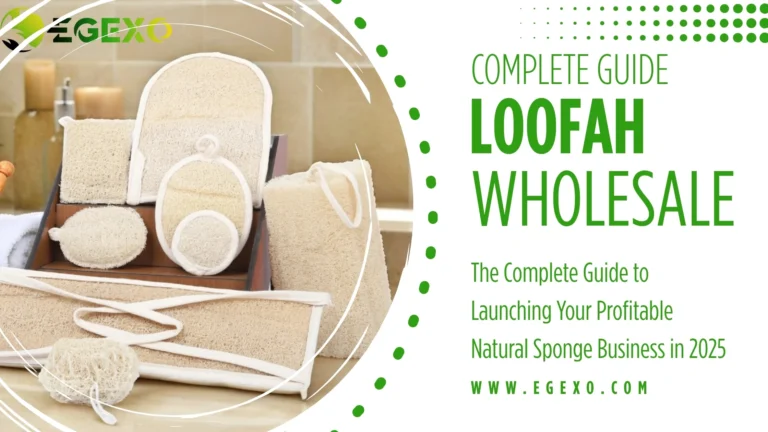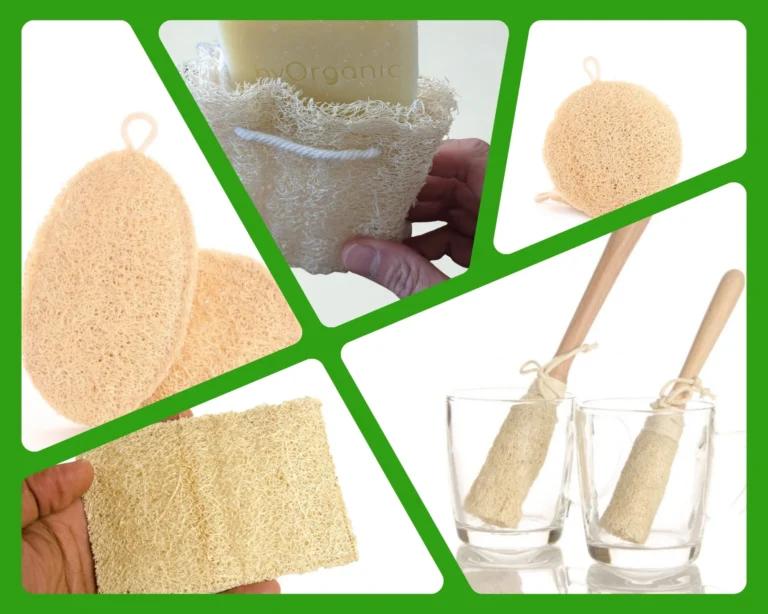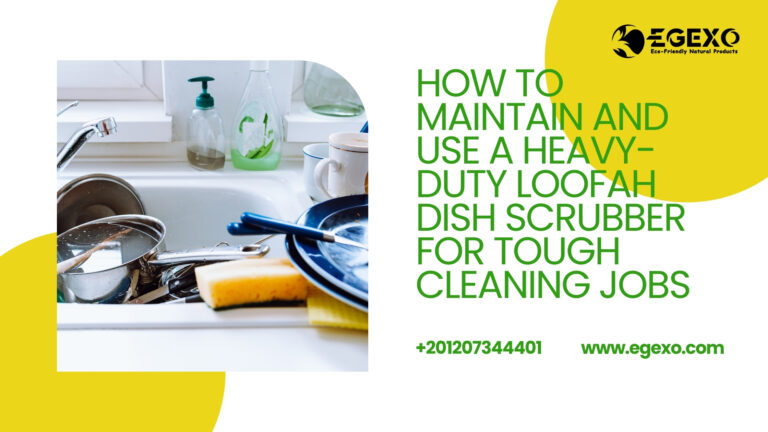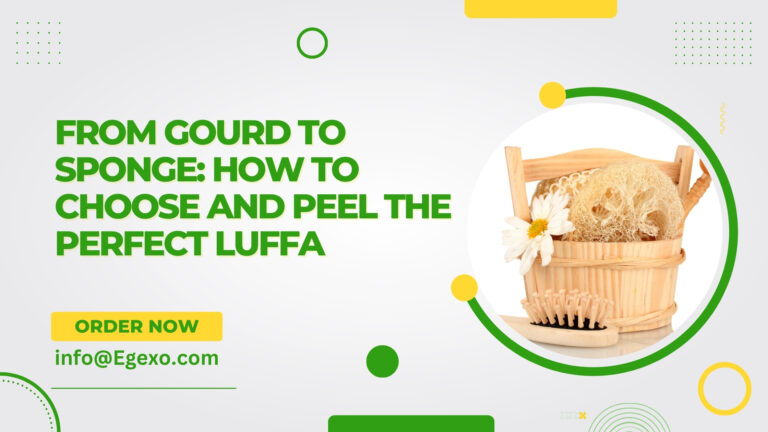The Versatile Egyptian Loofah Sponge: Uses and Benefits
Introduction to Egyptian Loofah Sponges
The Egyptian loofah sponge, derived from the Luffa aegyptiaca plant, is a unique natural exfoliant that has been cherished for centuries. Its origins can be traced back to ancient Egypt, where it was not only used for personal care but also for various household purposes. Unlike synthetic alternatives, Egyptian loofah sponges are biodegradable and eco-friendly, making them a preferred choice for environmentally conscious consumers.
Botanically, the loofah is part of the Cucurbitaceae family, commonly known as the gourd family. The plant undergoes a fascinating transformation, beginning as a flowering vine and producing fruit that, once matured and dried, reveals a fibrous interior. These fibers are then harvested, processed, and crafted into the sponges we recognize today.
Egyptian loofahs distinguish themselves from others primarily through their exemplary quality, owing to the optimal growing conditions of the region. The Nile Delta’s nutrient-rich soil and favorable climate contribute to the loofahs’ superior texture and durability. As a result, they are highly effective in promoting blood circulation, removing dead skin cells, and providing an invigorating scrub without being overly abrasive.
In addition to their exfoliating properties, Egyptian loofah sponges offer versatility, extending their usefulness beyond skincare. They are highly absorbent and robust, making them suitable for cleaning tasks around the home. Furthermore, their all-natural composition ensures that they do not contribute to microplastic pollution, supporting both personal health and environmental sustainability.
Understanding the origins and benefits of Egyptian loofah sponges allows us to appreciate their historical significance and continued relevance. By choosing these natural sponges, we can enjoy a product that is not only effective but also aligned with ecological principles, marking a small but meaningful step towards a more sustainable lifestyle.
Exfoliation and Skin Care
The Egyptian loofah sponge, renowned for its natural fibrous texture, is prominently used in exfoliation and skin care routines. Effective exfoliation is a crucial part of maintaining healthy skin, and loofah sponges are excellent for gently removing dead skin cells that accumulate on the skin’s surface. This exfoliative process prevents clogged pores, which can lead to common skin conditions such as acne and blackheads.
By unclogging pores, the loofah sponge allows the skin to breathe and opens pathways for moisturizers and other skin care products to penetrate more deeply and effectively. Furthermore, the physical action of exfoliating with a loofah sponge stimulates blood circulation, encouraging a natural glow and aiding in skin cell renewal. This consistent stimulation and renewal process results in smoother, more radiant skin over time, emphasizing the loofah’s vital role in maintaining a youthful appearance.
When using a loofah sponge in your skin care regimen, it’s essential to adopt proper techniques to avoid potential irritation or damage. For effective yet gentle exfoliation, it’s recommended to soak the sponge in warm water before use, softening its texture. Begin by scrubbing the skin in a circular motion, applying light to moderate pressure, focusing on rough areas like elbows, knees, and heels. Avoid using the loofah on sensitive or broken skin to prevent irritation.
To maximize the hygienic benefits of your loofah sponge, rinse it thoroughly after each use to remove any residual soap or dead skin cells trapped in its fibers. Moreover, allowing the sponge to dry completely between uses can help prevent bacterial growth. It is advisable to replace the loofah sponge every few weeks to ensure it remains effective and safe for skin care.
In summary, the Egyptian loofah sponge’s natural texture and gentle abrasive properties make it an indispensable tool for skin exfoliation and care. By incorporating this versatile sponge into your routine, you can achieve and maintain healthier, more vibrant skin. Proper usage ensures maximum benefits while safeguarding against potential skin damage, highlighting the loofah sponge as an integral asset to personal hygiene and beauty.
Household Cleaning
The Egyptian loofah sponge extends its versatility beyond personal care, proving to be an invaluable asset for household cleaning. Its natural abrasiveness and robust durability make it particularly effective for a diverse range of cleaning tasks within the home. One prominent application is in the scrubbing of dishes. The loofah’s textured surface can tackle stubborn food residues on pots, pans, and plates without causing scratches, ensuring that your cookware remains in pristine condition.
In addition to dishwashing, loofah sponges excel in cleaning various surfaces throughout the household. When applied to countertops, sinks, and stovetops, the loofah’s coarse texture efficiently removes spills, stains, and crumbs. It is equally adept at cleaning bathroom surfaces like tiles, grout, and bathtubs, where soap scum and mildew often accumulate. The loofah sponge can effortlessly scrub away these buildups, leaving surfaces clean and glistening.
Furthermore, one of the most impressive attributes of the loofah sponge is its capability to eliminate tough grime. Whether dealing with grease-laden oven interiors or dirt-encrusted floors, the loofah’s fibrous structure can break through the toughest layers. This characteristic reduces the need for harsh chemical cleaners, promoting a more environmentally friendly approach to household cleaning.
For sustainability-conscious individuals, the reusable nature of the Egyptian loofah sponge is an added benefit. Unlike single-use synthetic scrubbers, loofah sponges can be used repeatedly and, with proper maintenance, endure for an extended period. Once their lifespan is over, they can be composted, minimizing waste and benefiting the environment.
In conclusion, the Egyptian loofah sponge is a Natural, versatile, and eco-friendly tool that enhances both the efficacy and sustainability of household cleaning practices. Its various uses demonstrate not only its utility but also its contribution to a greener and cleaner home.
Gardening and Agriculture
The applications of Egyptian loofah sponges extend beyond personal care, finding significant utility in gardening and agriculture as well. One of their most interesting uses is as a natural potting medium. When dried, loofah sponges can be broken into smaller pieces and mixed with soil to enhance its structure. This mixture aids in soil aeration, ensuring that plant roots receive adequate oxygen, which is essential for healthy growth. Additionally, the organic nature of loofah sponges contributes to the overall fertility of the soil as they slowly decompose.
Moreover, dried loofah sponges serve as an excellent support system for climbing plants. Gardeners can attach sections of the sponge to fences, trellises, or stakes, providing a gentle yet stable medium for plants like beans, cucumbers, or vines to cling to. The texture of the loofah offers a firm grip, allowing climbing plants to grow vertically and ensuring better exposure to sunlight.
Loofah sponges also make for innovative, eco-friendly plant holders. By hollowing out the center of a dried loofah, you can create a biodegradable container that supports small plants. These natural plant holders are not only aesthetically pleasing but also promote sustainability, as they can be planted directly into the ground where they will decompose and enrich the soil.
In terms of soil enhancement, incorporating loofah sponge material into garden beds or container plants can significantly improve water retention. The sponge-like properties allow them to absorb and slowly release water, providing a consistent moisture level that benefits plant health, particularly during dry periods.
In essence, the versatility of the Egyptian loofah sponge in gardening and agriculture highlights its value as a sustainable and multifunctional resource. From supporting plant health to promoting eco-friendly practices, its benefits are both practical and environmentally conscious.
Culinary and Kitchen Uses
The Egyptian loofah sponge serves various purposes in the culinary world, especially when harvested young. As a versatile vegetable, it is included in diverse recipes owing to its unique texture and mild flavor that readily absorbs spices and seasonings. One common preparation involves slicing the young loofah into thin rounds and incorporating it into stir-fries, soups, and stews. This not only adds a delightful crunch but also heightens the nutritional profile of the dish, offering dietary fiber, vitamins A and C, and essential minerals.
Another popular recipe features stuffed loofah, where the vegetable is hollowed out and filled with a mixture of rice, meat, and herbs. This dish, which traces its roots back to Middle Eastern and Southeast Asian cuisines, underscores the cultural significance of loofah sponges in traditional culinary practices. Additionally, thinly sliced loofah can be pickled for a tangy treat that complements a variety of meals, demonstrating the sponge’s flexibility in flavor absorption and preservation methods.
Beyond its direct inclusion in recipes, loofah sponges play a valuable role in the kitchen as sustainable food preparation tools. Once dried and processed, they make excellent natural scrubbers that are ideal for cleaning produce such as root vegetables. Their fibrous nature is gentle enough to avoid damaging delicate skins while effectively removing dirt and impurities. Embracing loofah sponges as culinary tools not only reduces reliance on synthetic materials but also aligns with eco-friendly kitchen practices.
Moreover, loofah sponges contribute to sustainable living in the kitchen through their biodegradability and renewable sourcing. Unlike plastic-based kitchen scrubs that contribute to waste, loofah sponges can be composted after their lifecycle ends, enriching the soil and supporting an environmentally-conscious approach to household management.
The integration of loofah sponges into both culinary creations and kitchen routines reflects their dual utility and ecological significance. These humble sponges exemplify the interconnectedness of food and sustainability, promoting healthier and more responsible choices within our everyday lives.
Environmental Benefits
Using natural Egyptian loofah sponges significantly contributes to sustainability and environmental conservation. One of the primary advantages is their biodegradability. Unlike synthetic sponges, which often end up in landfills and contribute to long-term plastic pollution, Egyptian loofah sponges decompose naturally. This eco-friendly attribute not only lessens the burden on waste management systems but also ensures that our ecosystems remain free from non-biodegradable materials.
Moreover, loofah sponges are sourced from a renewable plant. The loofah plant, belonging to the cucumber family, can be cultivated and harvested annually. Its rapid growth cycle means that it can be replenished quickly, unlike petroleum-based synthetic sponges that rely on finite resources. By choosing Egyptian loofah sponges, consumers support agricultural diversification and promote the sustainability of resources.
Another critical environmental benefit of selecting Egyptian loofah sponges over their synthetic counterparts is the reduction of plastic waste. Synthetic sponges, often made from various forms of plastics, contribute significantly to the problem of plastic pollution. These plastics, when broken down, form microplastics that infiltrate water bodies, harming aquatic life and potentially entering the human food chain. In contrast, Egyptian loofah sponges eliminate this issue, presenting a natural and safe alternative that is kind to the environment.
The cultivation of loofah plants also offers substantial agricultural benefits. These plants can be grown on marginal lands, enhancing their economic viability for farmers and reducing pressure on fertile soil used for food crops. Additionally, as a natural crop, loofah plants support soil health through their rooting systems and contribute to biodiversity, preventing monoculture dominance and soil erosion. Thus, the agricultural practices associated with loofah cultivation play an essential role in promoting sustainable farming.
Overall, the environmental advantages of Egyptian loofah sponges are manifold. From their biodegradability and renewable sourcing to the significant reduction in plastic waste and associated agricultural benefits, they present a sustainable choice that aligns with the broader goals of environmental conservation and responsible resource management.
DIY and Craft Projects
The Egyptian loofah sponge is not just an exceptional exfoliating tool but also a versatile component in numerous DIY and craft projects. Whether employed in bath accessories or artistic creations, the loofah can add a unique, natural touch to your homemade items.
One popular use of loofah sponges is in the making of exfoliating soap bars. These soap bars can be crafted by cutting the loofah into slices and embedding them in melted soap base. Choose a soap base such as glycerin or goat’s milk, and pour the melted mixture over a well-cleaned loofah slice in a mold. Allow it to cool and harden, resulting in a soap bar that not only cleanses but also gently exfoliates the skin.
Loofah sponges can also be used to create luxurious bath accessories. By simply stitching a piece of loofah onto a handle or glove, you can make a custom bath scrub that offers the perfect blend of firmness and softness for invigorating massages. These handmade scrubs are perfect for both personal use and gift-giving.
Beyond bath-related items, loofah sponges are also excellent for eco-friendly crafting. For instance, loofah can be used in place of synthetic materials in various projects. Cut and shape the loofah to design sustainable kitchen scrubbers, or use them in your own art projects as natural-textured brushes to create unique paint patterns.
Decorative pieces made from loofah add a touch of nature to home decor. They can be dyed and shaped into various forms like decorative flowers, wreaths, or even miniature sculptures. The loofah’s naturally fibrous texture adds an interesting visual element to any creation, making it a favored material among eco-conscious crafters.
The applications of the Egyptian loofah sponge in DIY projects are limited only by your creativity. Not only are they multifunctional, but they also align with sustainable living principles, making them a fitting choice for those aiming to reduce their environmental footprint.
Choosing and Caring for Your Loofah Sponge
When selecting an Egyptian loofah sponge, several factors come into play to ensure you acquire a product that fits your needs effectively. The size of the loofah is one important consideration; loofahs come in various dimensions, ranging from small facial sponges to large bath and shower ones. For facial use, a smaller loofah is ideal for delicate, precise exfoliation, whereas larger ones provide effective coverage for the body.
Texture is another key factor. Egyptian loofahs are known for their superior texture compared to synthetic alternatives. A well-chosen loofah should have a firm texture yet be pliable enough for comfortable use. When purchasing, it might be useful to feel the loofah or read reviews that focus on the texture quality. Authentic Egyptian loofahs usually dissipate resistance and soften to perfection upon first exposure to water.
The origin of the loofah also matters. Egyptian loofah sponges are particularly prized for their quality, cultivated under optimal growing conditions in Egypt. Always look for reputable sellers that can verify the loofah’s authenticity. Labels such as “Egyptian-grown” or “Egyptian origin” can often be indicators of higher quality.
Caring for your loofah sponge properly will extend its life and maintain its effectiveness. After each use, it is crucial to rinse the sponge thoroughly to remove any remaining soap and skin cells. Squeeze out excess water and hang it in a well-ventilated area to dry completely, which helps prevent mold and bacteria growth. Storing loofahs in a humid environment can foster mold development, so ensure they are kept in a dry location.
Regular cleaning extends the lifespan of your loofah. A simple yet effective cleaning method involves soaking the loofah in a solution of white vinegar and water for a few hours before rinsing thoroughly. Alternatively, you can microwave the damp loofah for about 30 seconds to kill any bacteria. Replace the loofah every few months, as even with proper care, loofah fibers can break down over time, reducing effectiveness.

